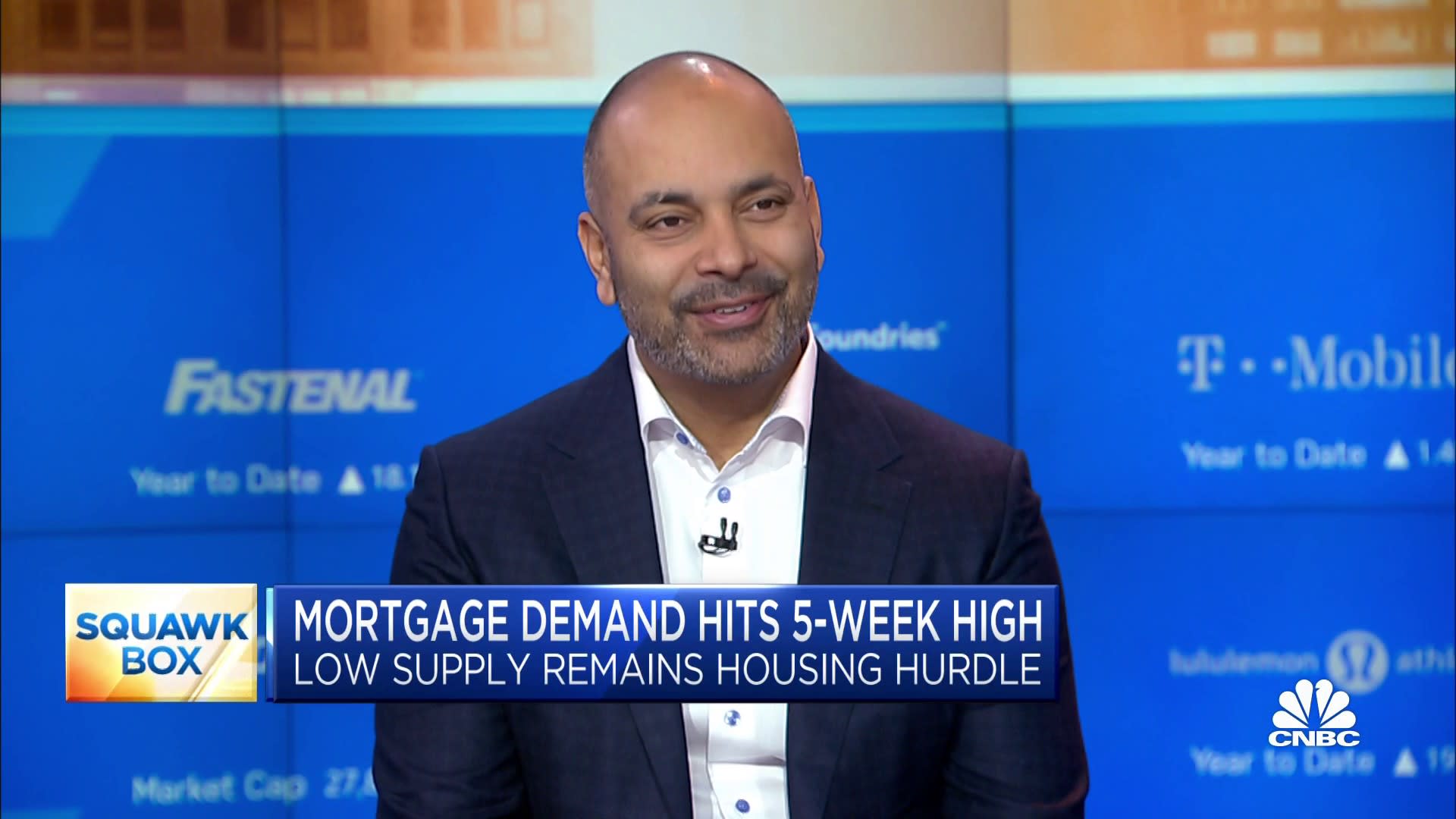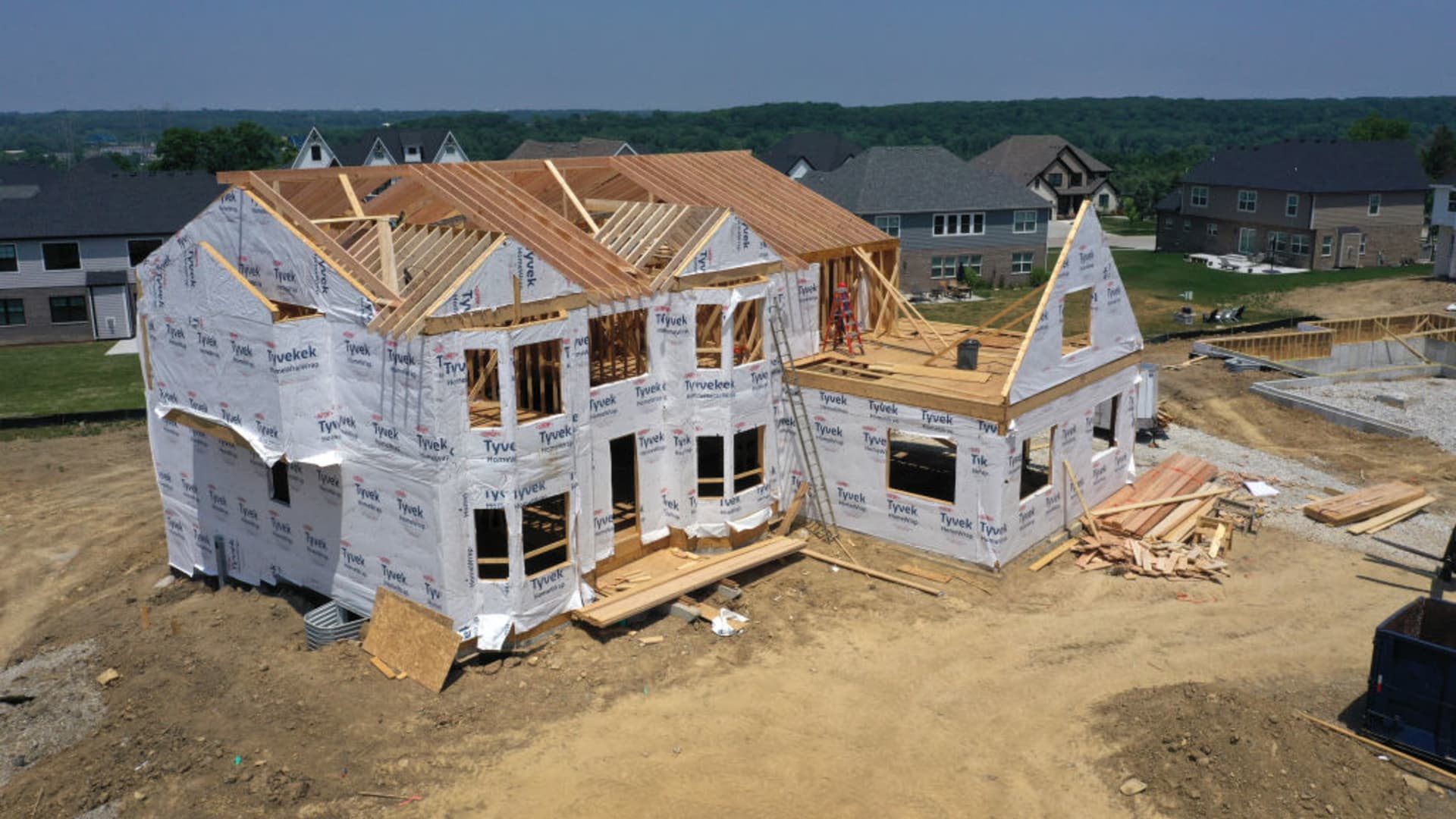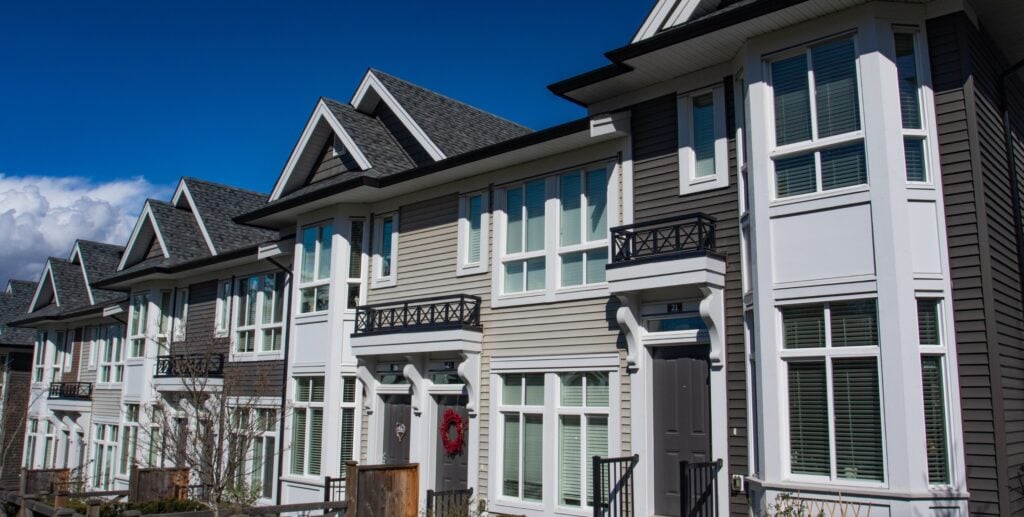“We’re Going to See a LOT of Deals” in 2024, Says Top Multifamily Lender
With interest rates at the highest point in decades, multifamily and commercial real estate purchases have dropped by more than 50%. Cash flow looks almost nonexistent, but good deals could be right around the corner as inexperienced operators are forced to give up their properties or pay MASSIVE amounts of money to the bank. What can you expect as the 2024 housing market rolls around? Stay tuned; we’ll give you all the info!
Alison Williams, SVP & Chief Production Officer at Walker & Dunlop, joins us to discuss “small balance lending” and where MANY multifamily investors get their money. Alison is able to tell you point-blank what a lender needs to see to lend on your deal, how much money you should be prepared to come to the table with, and what could happen as the bridge loan bomb begins to go off.
Alison also believes we’ll see “a LOT of deals” in the coming months/years as operators are forced to refinance, foreclose, or sell. This presents a massive opportunity for new investors who have been starved of deals and are looking to pick up another property without paying 2021 or 2022’s high prices!
Dave Meyer:
Hey everyone. Welcome to On the Market. I’m your host, Dave Meyer. Joined today by Kathy Fettke. Kathy, we have a show that I think is kind of tailor-made for you today. We’re going to have Alison Williams, who’s the senior Vice President of Small Balance Lending at Walker & Dunlop join us today. She’s going to talk about lending in the smaller multifamily space. Kathy, this is kind your wheelhouse, right?
Kathy Fettke :
It is, and I think our listeners today are going to be really excited about some new information that she’s going to share.
Dave Meyer:
Absolutely. So you’re going to want to check out this episode because we talk a lot about, first and foremost, what’s going on in the smaller multifamily market. And when we talk about this, we are talking about some one to… Two to four units, but generally speaking, commercial properties that are just smaller in asset value. So we’re going to talk about what’s going on with default rates, if valuations are going to go down. But then Alison’s also going to share with us some really helpful practical information for anyone who currently owns these types of deals or who wants to get into these types of deals, how you can appeal and get funding right now, because funding is a little bit harder. So this is a really good practical thing for everyone to pay attention to. All right, with no further delays, let’s bring on Alison Williams, Senior Vice President and Chief Production Officer at Walker & Dunlop.
Alison, welcome to On the Market. Thanks for being here today.
Alison Williams:
Thanks so much for having me.
Dave Meyer:
So today we’re going to be talking about small balance lending. For those in our audience or perhaps for a podcast host who doesn’t know what that means, could you please explain it for us?
Alison Williams:
Well, I’m not surprised you don’t know what that means if you’re referencing yourself.
Dave Meyer:
I am.
Alison Williams:
The terminology is a terminology that I think we use mostly internally and at some lender programs. But to sum it up, I work at Walker & Dunlop and I run one of our lending departments that focuses on small multifamily loans. So we call them small balance. What that really means is that our loan sizes start at a million, and our team really focuses on the $1 million to $15 million multifamily lending environment. And so asset values could be anywhere from $1,500,000 or significantly higher if it’s a really low loan-to-value in our group. But small balance just really means the size of the loan and nothing else.
Kathy Fettke :
Are you usually working with individuals or small funds at that level?
Alison Williams:
Yeah, so a lot of individuals. I would say the main difference in the group that, the borrower classification that we’re working with and maybe some of our larger institutional groups is they are either individuals that own these real estate assets outright 100% by themselves. They could be syndicators where they’re actually going out and raising funds and they’re really the general partner, but they have a lot of limited partners behind them, or they’re smaller family offices and they’re really just, I think everybody, I would say for the most part is really just trying to create generational wealth. So they all have the same goal, but they just have a different way of doing business and getting their deals.
Dave Meyer:
And in the BiggerPockets sort of retail real estate investor world, when we say small multifamily, often we’re talking about specifically two to four unit properties, is that what you’re talking about? Or just smaller asset size of commercial assets.
Alison Williams:
So for us it’s really commercial multifamily assets. So for Freddie Mac and Fannie Mae, they really define small multifamily as five units or greater, and then the single family would be the one to four units. However, this past year, Freddie Mac made a change to their program that did allow for portfolios of the two to four units to actually be eligible. So those need to be within a three-mile radius. So there is some uniqueness to that program, but it does now allow for borrowers that have larger portfolios of these assets together to be eligible for agency financing.
Kathy Fettke :
Oh my gosh. Well, I am just so excited to hear about that because we have a fund now build-to-rent with one to four units right next to each other, so you’re going to be hearing from me Alison.
Alison Williams:
That’s great.
Kathy Fettke :
But I’m curious because I heard that commercial real estate purchases were down 50%. Is that applying to you, or in small balance are you seeing something different?
Alison Williams:
Yeah. So correct, the overall multifamily acquisition market is down north of 50% this year. The lending market is down about 40% according to the latest MBA forecast. But the agency world, which is Freddie Mac and Fannie Mae, which we are the largest agency lender in America, they are only down about 20% this year. So while we are seeing a lot of capital providers stepping out of the market like banks, local community banks, regional players, maybe some private lenders that were doing some more value add bridgy-type loans, those are kind of stepping to the sidelines. The agencies are actually here to provide capital in these uncertain times, and a very accretive cost of capital as well compared to where the banks are trading. So while the market is down, we’re not down nearly as much, just given that we have access to both Freddie Mac and Fannie Mae.
Dave Meyer:
And just for everyone listening, when Alison says MBA, that’s the Mortgage Bankers Association, they released tons of great data about the state of the mortgage market in volume. A lot of it is free, so you can check that out. Alison, before we go any further, I’m curious how you got into small balance lending, and what makes you like this sub-sector of the lending industry so much?
Alison Williams:
Absolutely. So I’ve actually been in the industry for 20 years. I actually started originally as an analyst underwriting deals, and then I am moved into a sales originator role, which is like a mortgage broker. I was on the sales side for 14 years and then took a position with management to really build out Walker & Dunlop’s small balance platform.
So my historical experience had always been in the larger lens space, and we really just wanted to bring that high level of customer service, customer touch to the small balance sector. We felt that it really wasn’t getting the love and attention it needed, and so we started to focus on it. And so if you look up Walker & Dunlop, you’ll see that we have these really big audacious drive to 25 goals, and one of them was to specifically focus on the small balance sector. And I think the thing why it’s so interesting to us is that it’s highly affordable. And what I mean by that is it provides the majority of workforce housing to America. And so you cannot actually be a player in the workforce housing space without being in the small balance sector, which is why we’re really committed to the space, as well as the agencies.
Kathy Fettke :
Oh my gosh, we share a passion there of providing affordable housing to people, it’s so needed. Are you seeing distress, I mean obviously there’s distress with people trying to find housing or trying to find an affordable place to live. There’s also a lot of stress with landlords. Are you seeing that in small balances? I mean obviously we’re seeing it across the board in commercial real estate, but specifically in small balance, or is there a difference?
Alison Williams:
I wouldn’t say we’re seeing it specifically in small balance. We’re seeing it in general, and I think the common trends and the deals that are starting to have a little bit of hair on them or trouble is either maybe borrowers that grew a little too fast. They acquired too many deals at once, maybe didn’t have the experience or a professional third party management firm to really help them grow at that scale, that quickly. And those deals are struggling a little bit.
The other part is just inflation. If you look at just where operating expenses have gone on these assets between real estate taxes, insurance, just utilities, those are up 10, 15% year over year, and that’s really affecting the cashflow of these deals. And then borrowers are making hard decisions. Do you invest in capital improvements at the asset and keep it really just as a really solid quality, or do you use that money to pay debt service, which just given the inflationary aspect that we’re seeing right now.
So I would say borrowers that have deeper pockets, more liquidity maybe that weren’t so heavily syndicators are having a better time and easier time. And those that grew a little too fast or that were heavy syndication acquisitions are starting to struggle a little bit. But in general, I think, I don’t want to make it sound like it’s really bad because it’s really not. The actual default rate in our world, which is really a non-recourse space that we play in, and I can discuss that a little bit more here in a minute, is it’s less than 50 basis points. And so it’s 0.5% default rate for ours. So it’s historical lows, it’s still lower than what we saw during the COVID recession, it’s lower than what we saw in the great financial recession. And so while it’s in the news right now and a lot of people are talking about it, it’s not anywhere near the level that we saw on those two historical events.
Dave Meyer:
I saw that recently just looking across commercial assets at default rates, and they’re lower than I would’ve thought given the headlines that you see about commercial real estate right now.
Alison Williams:
Well, only the big deals make the news.
Dave Meyer:
Yes, right. I guess that’s the situation is there’s a couple high profile ones and people latch onto that. But given the environment, do you expect to fault rates to go up?
Alison Williams:
I do. I mean, I think that we are going to see them increase. I don’t think that they’ll get to the levels that we saw with the last great financial recession that we had. But the biggest thing that we’re dealing with right now is just the cost of capital has increased 3x on borrowers. And what I was talking about earlier, we do non-recourse financing. And so what that might be different from a lot of the listeners here is where you’re buying a one to four unit asset and you might go get an investment property loan from the agencies, which is more like a single family loan where they’re really underwriting your net worth, your liquidity and maybe your income that you have personally. What we’re underwriting is actually the income that comes off of these assets. And so we’re really hyperfocused on what’s the income less the expenses, and that ends up with a net income, also known as a net operating income.
And that is how we size our loans. That’s how we determine what kind of loan amount you can get. And what kind of loan amount you could have gotten at a 4.5% interest rate is significantly different than what you can get today at a 7.5% interest rate. And I think in the default question, I think what we will start to see is deals that will come up for loan maturity, which that means their loan is due. They did an initial 5-year term or a 7 or 10-year term, those loans will be coming due. And to give you an idea of the scale of this, just in multifamily alone, there’s about $250 billion that comes due next year. The majority of that is with banks. The agencies do not have a large pipeline of loans that are maturing because they typically do longer term 10-year loans, but there is a substantial amount of bank maturities that are coming due, as well as bridge loan maturities.
And those deals are going to be dealing with, they originally went in at probably a 3% rate, and today it’s a 7.5% rate. And those borrowers are either going to have to sell the asset just so they can get out of the loan, and then the new buyer will come in and rightsize the deal to whatever debt level the cashflow could actually get us through today. Or they’re going to have to come to the table with cash to be able to refinance into a lower loan amount because of just that interest rate change that happened, or they could potentially give back the keys. And that’s the benefit of non-recourse lending is those are non-recourse, that means we do not come after the client, as long as they act appropriately and they hand us back the keys, but they will lose their equity that they have in the deal.
And then it’s us as a lender, our responsibility to go and sell that asset and try to be made whole. We haven’t seen a ton of asset valuation deterioration yet. That values have come down some, but we had such a substantial amount of rent growth the last couple of years, that most of these deals could still sell for their basis. And by basis I mean what they paid plus all their improvements. Now, they may not get this massive increase in profitability at the end of the day, but that’s much better than losing everything by going through a foreclosure.
Kathy Fettke :
Well, that is just what I was going to ask is, I know there’s so many investors on the sidelines waiting for values to come down, waiting to jump in to multifamily, and that just hasn’t happened yet. Or do you think it will? Do you… I mean you just answered it, you said probably not that they may be just-
Alison Williams:
I mean, I think we will. I think we will see deals, I actually think that we’re going to see a lot of deals in the acquisition market next year. I think there’s been a lot of people that sat on the sidelines all year long thinking that the Fed was going to decrease rates in the fourth quarter. Obviously that didn’t happen. And so they’ve been postponing and kicking the can on their loan maturity thinking that, hey, I’m going to be able to refinance and rates are going to be substantially better. And that just hasn’t happened.
And so I do think that going into next year, you’re going to see a lot of these borrowers who thought they were going to be refinancing actually selling. And the positive to people out there looking is that those deals will trade at a lower value today than what it was a year ago or two years ago. But it’s not necessarily going to be like a 2015 or 2012 level. We haven’t seen enough decrease in value to get us back to that. So it will be a better deal, but it’s relative to compare to what you’re trying to go after. And I think everybody, me too, I would love to be able to get some buying powder back to the 2008 to 2012 level, but I just don’t see us getting there.
Dave Meyer:
I think that’s really important for people to remember here that even when you see these double-digit declines in values for office space or maybe in multifamily, that is off a really high peak that grew really dramatically throughout the pandemic era. And most asset values, at least what I’ve seen, are still well above pre-pandemic levels. So I think the people who bought 3, 4, 5, 6 years ago are still doing pretty well in terms of their equity value. It sounds like the people who are at risk are people who perhaps bought in late 2021 or in the last year and a half, who may have bought near peak valuations and even slight declines then could put them in trouble.
Alison Williams:
Absolutely. And I think the other thing too is there’s a lot of people that bought in ’21 and ’22 that bought an older asset trying to do an improvement plan to bring it up to a better class of an asset, and then they got hit with construction delays and construction increases. And so all of a sudden their basis, how much they paid plus their capital improvements went through the roof. They probably lost that equity. I mean, it stinks, it really does. But the answer is is they probably lost that equity, and last, they can sit in that deal for a very long time until interest rates come back down and cap rates normalize and they can get out.
But the reality is most people that are doing that significant bridge play, which is where they’re putting dollars into the interiors or exteriors, they did shorter term loans, and those loans will be coming due. And those are the deals that I think that will have a real opportunity for other people to come in and acquire. But we just have to be realistic about, what is that price? Again, it’s not going back to the great recession levels, it’s just a normalized value.
Kathy Fettke :
And for those new to the concept, can you explain that bridge loan scenario? That’s one of the reasons I stayed out. It just didn’t make sense. So yeah, if you could explain the bridge loan and why people were doing that, and what you can expect today, what an investor should be coming to the table with in terms of down payment.
Alison Williams:
Absolutely. So the popular bridge program that was really selling off the shelves was basically a three-year term. So the lender would do a three-year term, and this was ’20, ’21, ’22, and even some in ’19, honestly. And so those deals were structured as a three-year term, and then they do have extension periods, but those extension periods require a certain performance hurdle. So you don’t just automatically get your extension, you have to show that you executed on your business plan to be able to execute. The reality is most people weren’t able to execute because of construction delays and cost. So let’s ignore the fact that they might have an extension, because it likely won’t happen.
So they’re an initial three-year term, and the lender basically provides, so say it’s a $10 million loan, the lender would provide 75% of the purchase price at closing. So you could acquire that asset and then they would provide 100% of your CapEx plan.
So if you wanted to go put another $2 million in that asset, you would basically have an initial funding of the $7.5, and then you would have the ability to draw down an additional $2 million as you do those repairs. And so that loan goes from $7.5 to $9 million just by doing that. And the lender, the way they’re looking at it is they’re saying, “Well, what’s my exit strategy? How can I get out of that deal?” And when we wrote deals in ’21 and ’22, we were forecasting continued rent increases, we were definitely not forecasting expenses to increase at the levels that they have, and we absolutely were not forecasting that interest rates would be close to 7.5 or 8% to get out of it. And so that’s the trouble. And so we know for a fact all of those deals will require substantial equity. That means cash borrowers bringing cash to the table to refinance that or they’ll be forced to sell.
Dave Meyer:
So Alison, we’ve talked a little bit about potential declines, maybe increases in defaults. But as a lender, you are probably uniquely able to answer a question that has been on my mind. What does a good deal look like right now? Because you’re clearly still lending, so what deals are being done, and where are they?
Alison Williams:
Yeah, so I actually, I did some math, let me see my little sheet. I did some math to give you guys some ideas, because I wanted to speak in a language that everybody could understand. And so I think most borrowers or developers or asset owners come into this business thinking that they want decent leverage. And by leverage, I mean if you’re, again, buying a $10 million loan, if you wanted 75% leverage, that means you need a $7.5 million loan. So I’ll break it down for you what that means today.
So in order to get to a 75% leveraged loan, which means you bring 25% cash to the table, you need to buy that deal at what we would call an 8% cap rate. And the cap rate is basically taking your net income, so that’s your rent less all of your operating expenses, before your debt service payment, and dividing it by 8%.
If you can do that and get to your purchase price, you’ve got a solid deal and you can get 75% leverage. But if that cap rate is, let’s see, I did the math here. If that cap rate is 6%, you’re only going to get a 57% leverage loan today. That means you got to bring a lot of cash to the table to transact. And so my advice to anyone looking for deals is really honing in on the in-place cashflow today of that asset, not the future. Don’t assume you’re going to be able to have substantial rent growth, you’re going to be able to decrease expenses, not in today’s environment. That’s really challenging.
But look at the in-place income today and apply that cap rate to it, and if you’re not somewhere between that 7 and 8% and you need a lot of leverage to make the deal work, you should move on. And to our conversation earlier, Dave, like sellers aren’t yet hurting so much that they’re willing to just let something go at an eight cap. That’s not happening that often. So people just need to be realistic about the deals they’re chasing and whether or not they can actually transact.
Dave Meyer:
Well Alison, Kathy, before you ask another question, I just need to commend you. It took me, I just looked it up, it took me 410 pages to explain something you just explained in a minute. So thank you for making that a lot more understandable for our audience that I’ve ever been able to.
Alison Williams:
Appreciate that.
Kathy Fettke :
Wow, that seems almost impossible. I mean, one of the things, I have a lot of people pitching deals to me, and one thing that they keep leaving out, it’s amazing, is the increase in taxes.
Alison Williams:
Yeah.
Kathy Fettke :
I mean, as a lender, how are you protecting yourself in these uncertain times?
Alison Williams:
So from a tax standpoint, we actually do underwrite what the taxes would be after year one, so after a reassessment. So some states are non-disclosure states, maybe they reassess taxes every four years, but there’s a lot of states that reassess January 1 of the following year. And so we look at that and we apply that increase into our underwriting to make sure that we have enough cashflow to cover all the expenses that the property’s accruing, plus obviously the interest payment.
And then the other big increase that we’re seeing is insurance. Insurance is honestly, particularly in the Sunbelt, just a disaster. I live in Florida, so I can say that. And that is another area that those two line items are a huge, huge portion of your entire operating expenses. And so we really dig in on those two things to make sure that one, the borrower has the appropriate insurance in place. So if there was a national disaster, they’re not hurting and they’re not going to have a substantial loss that could affect us. And then on the real estate tax side, same. We’re just making sure that there’s enough cashflow to cover that and we’re not over-leveraging those deals.
Kathy Fettke :
What other blunders do you see in the underwriting that people are submitting?
Alison Williams:
What other lenders, like capital sources?
Kathy Fettke :
Oh no, like the investors trying to get loans from you and you turn them down.
Alison Williams:
Oh. Yeah, the deals that are working, we’re seeing a lot work in the central region. So that would be like the Midwest down to Texas, in some of the smaller tertiary secondary pockets. Those deals, they already started at higher cap rates, so they’ve moved a little bit and they’re probably at a 7+ cap rate. But if you’re trying to buy an asset in California or trying to buy an asset in Florida, you’re going to have to come to the table with some more cash for it. And what I always tell my clients is really look at your replacement cost.
What we’re going through right now is a little bit of a bubble. We cannot, this 8% interest rate market is not normal. I’ve been doing it 20 years, this is the highest I’ve ever seen. But if you can go in and you can bring cash to the table and you’re buying it at a solid basis that you can’t replace. Like irreplaceable location, phenomenal suburb, great schools, great economic drivers, workforce drivers, and a good replacement cost and solid bones, you should try to figure out how to make that work. And then make sure you’re staying in areas that you understand and don’t try to go out over your skis and really start investing in markets that you’re not familiar with, unless you can really pull in local third party management that has that experience.
Again, I think that people think that you can just pick up your business model and move it wherever, but the reality is you can’t, it’s not that simple. Financing is a little bit easier in terms of that’s a standard formula, but operating a property, that’s a specialty, right? That’s like a special touch, and you’ve got to figure that out.
Kathy Fettke :
So would you lend to a first time investor?
Alison Williams:
So we do… So Freddie Mac does not typically, but Fannie Mae will lend to a first time operator if they’ve been an investor in other assets. So we don’t want somebody that’s just coming in off the street saying, “Hey, I’m going to buy my first loan or first property, I’ve never done this before.” But if they have somewhat of a track record or have been in the business, then we will look at that. Now we might be a little more conservative on those loans. We definitely would want third party management, we’d want to make sure that management company has a lot of units nearby with a track record. We would do a deep dive into their resume, what is their property performance? And then we really look at net worth and liquidity, making sure that that investor has enough funds to put in this deal and that if it has a hiccup, isn’t going to have to turn the property back in. I mean, these are non-recourse loans, but we don’t want to own them, but we definitely want to make sure that somebody can handle a hiccup or two.
Kathy Fettke :
So if someone’s not experienced, then they could have a partner who is, and then they get their resume built that way.
Alison Williams:
Absolutely. We see that all the time. So we’ll have somebody come in, we evaluate them and we say, look, you can’t do it alone, but do you have somebody else maybe that was a mentor to you in the business that’s willing to come on and also sign that loan with you? And that usually is what we see happen.
Dave Meyer:
Alison, before we leave, I’m curious if you have any other advice from your experience as a lender, for investors who are trying to navigate this tricky market.
Alison Williams:
I mean, I think my biggest advice is don’t wait. A lot of people waited this entire year to do something about a loan that they had on the books because they thought rates were going to come down faster than what I think we all think now. And if you look at what the economists are kind of forecasting for next year, it’s going to stay high for quite a while. And so if you have that loan maturity coming up anytime in the next 12 months, maybe even 18 months, you should start thinking about what you’re going to do there.
And I think the thing too that people need to understand is the banks can’t lend to the level that they’ve lent historically. They have higher reserve requirements, they have capacity issues right now, they have just a lot of headwinds, to say the least. And if people are waiting on that lender and expecting that lender to be able to really just extend their loan, they may be in for a shock when they actually have that conversation.
And so it’s making sure you have the right advisor to really figure out, what is the right loan for me if I wanted to refinance that? And I think that just given where the agencies are right now in terms of being able to be a really low cost capital provider compared to other private lenders and banks, it definitely needs to be one of the options that people are looking at. And if they’re not, they may miss out on just some really great terms.
Dave Meyer:
That’s excellent advice. Thank you so much Alison. If people want to learn more about your work, your team, your loan products, where can they do that?
Alison Williams:
So it’s a very long website, so I’ll just say go to Google and search Walker & Dunlop Small Balance Lending, and you will see our website will come up. There is a requested quote form where you can fill out some information about the deals that you’re looking at. We’ve got a team of originators, which are our sales professionals that are across the US with different specialties. You can reach out to any one of them and they can be of service.
Dave Meyer:
Awesome. And we will definitely put a link to your website in the show description and the show notes for anyone who is interested. Alison, thank you so much. This has been a pleasure, really insightful, we appreciate you being here.
Alison Williams:
Yes, thank you so much. Great meeting both of you.
Dave Meyer:
This was your kind of show Kathy, what did you think of it?
Kathy Fettke :
Oh, I thought it was fascinating. One that I’ve seen so many people bring deals to me where they were assuming that rates would come down, and I was too. And I don’t think that’s going to be happening. I’m glad I passed on those deals because assumptions are just that. People are guessing, and a lot of times they’re guessing on the exit cap rate.
Dave Meyer:
Totally.
Kathy Fettke :
And I’ve been seeing a lot of deals come by where they’re like, “Oh yeah, we’re going to be able to exit at this 5% cap.” And it’s like, well, how do you know? You don’t know where the market’s going to be in a few years.
Dave Meyer:
Honestly, yeah, I was thinking during this that we should do an episode or maybe like a YouTube video on a sensitivity analysis. Whenever I invest in a fund or anything, I look at that. And you basically look at the assumptions of anyone who’s bringing you a deal and you say, they think you’re going to get a 6% exit cap, but what if it’s 4%? What if it’s 8%? And you can start looking at your returns based on different scenarios to make sure that you’re protected in case the syndicator, even if they have the best intentions, are wrong about what the exit cap’s going to be, because it has a huge implication on valuations and what your returns are actually going to be.
Kathy Fettke :
Yeah, absolutely. And we’re in times where it’s just not so stable. It’s not like, oh, we can expect more of the same. I think we can expect more of the same, and that is high rates.
Dave Meyer:
Yeah, totally. And I just think you see these deals you’re talking about with people assuming an exit cap’s going to be at 5 or 5.5%, and it just doesn’t sound realistic to me given what other assets are offering out there. The risk adjusted returns on a multifamily with a 5.5% cap rate is just not very good right now. And so I just think you’re counting on dynamics in the market changing a lot, which is obviously outside of your control. And as an investor you don’t want to bank on things that are outside of your control being essential to driving returns. That just sounds like a recipe for disaster.
Kathy Fettke :
And the part of the interview where she said next year there’ll be a lot of refinances and people were expecting that things will be better. And it could be. I mean, it could be that we do find ourselves in a mild recession next year and rates come down and they’re in a better position than they would be today, but we just don’t know.
Dave Meyer:
Absolutely not. But I did love hearing that there are still good deals out there. The Midwest, there are still deals that are doing well. And I think it was really interesting what she said about not waiting. I think that’s true for purchases, but particularly for people who need to refinance. People who are current operators who are going to be facing a loan coming due or an adjustment in interest rate, should really start thinking about what they’re going to do now. And I know it’s tempting to wait 6, 12 months to see if rates come down. But as she said, banks don’t have as much money to go around right now. So I don’t think it would hurt you to start exploring your options right now.
Kathy Fettke :
Yeah, that’s a really good point.
Dave Meyer:
All right, well this was great. I learned a lot. Hopefully everyone else learned a lot as well. Thank you all so much for listening. Kathy, thank you for joining us, and we’ll see everyone for the next episode of On The Market.
On The Market was created by me, Dave Meyer and Kailyn Bennett. The show is produced by Kailyn Bennett, with editing by Exodus Media. Copywriting is by Calico Content, and we want to extend a big thank you to everyone at BiggerPockets for making this show possible.
Help us reach new listeners on iTunes by leaving us a rating and review! It takes just 30 seconds and instructions can be found here. Thanks! We really appreciate it!
Interested in learning more about today’s sponsors or becoming a BiggerPockets partner yourself? Email [email protected].
Note By BiggerPockets: These are opinions written by the author and do not necessarily represent the opinions of BiggerPockets.
“We’re Going to See a LOT of Deals” in 2024, Says Top Multifamily Lender Read More »















